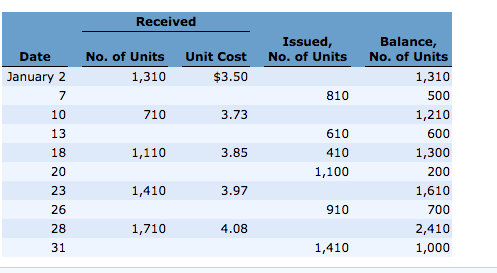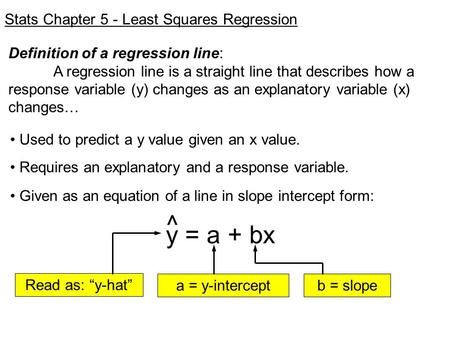What Is Account Reconciliation and Why Is It Important for Your Business?

And unlike some competitors that only track single inventory items, QuickBooks Enterprise lets you track inventory parts plus assemblies. You can also track the cost of goods sold and adjust inventory for loss or shrinkage. Unlike some competitors, none of Zoho https://www.accountingcoaching.online/gross-margin-vs-contribution-margin-what-s-the/ Books’ plans put a limit on billable clients, and even its free plan lets you send up to 1,000 invoices per year. On top of that, the free option offers a customer portal, automatic payment reminders, mileage tracking and the ability to schedule reports.
What are Business Expenses? Types, Taxes, and Tips

The account reconciliation process must be completed before a company can certify the integrity of its financial information and issue financial statements. To reconcile different transactions to balances, accountants will compare the details in the business ledger to documents provided or maintained in outside sources, like a bank or vendor. These can include such documents as invoices, receipts, and transaction statements. Account reconciliations are typically done at the end of an accounting period, such as at the time of the monthly close. This ensures transactions that are being closed out are properly verified and the closing statements are accurate.
Income tax liabilities
Add accounting widgets to your phone’s home screen; track time using your Apple Watch. Karrin Sehmbi is a lead content management specialist on the small-business team. She has more than a decade of editorial experience in the fields of educational publishing, content marketing and medical news. This may influence which products we review and write about (and where those products appear on the site), but it in no way affects our recommendations or advice, which are grounded in thousands of hours of research. Our partners cannot pay us to guarantee favorable reviews of their products or services. Versapay’s collaborative AR automation software combines powerful automation capabilities with tools for collaborating with team members and customers, all in one cloud-based platform.
Understanding the Reconciliation Statement
- Companies also use the accounting process to prevent or, at least, check for fraud.
- Also, if the bank statement shows money deposits not reflected in your internal records, you make entries of these transactions.
- The account reconciliation process must be completed before a company can certify the integrity of its financial information and issue financial statements.
- Sage 50 Accounting, unlike some of its competitors, offers inventory management and job costing features at all plan levels.
For lawyers, reconciliation in accounting is essential for ensuring that financial records are accurate, consistent, and transparent. While proper reconciliation is the standard for how law firms should handle all financial accounts, it is particularly important—and often required—for the management of trust accounts. Reconciling law firm trust bank accounts regularly via three-way reconciliation allows you to uphold your duty to keep proper, accurate accounting records for client funds held in trust, while also ensuring you stay compliant.

Periodic accounts reconciliation will ensure that the true value of the investments is reflected in the book of accounts. The rules vary depending on whether the thief used just your account number or your physical ATM or debit card. In the first instance, you aren’t responsible for any transactions you didn’t authorize as long as you report them within 60 calendar days after your statement was sent to you. You can still create a free account to access the latest from our online publication, ANA Magazine, receive content and special event offers through our newsletters, get breaking industry updates, and so much more. Use your business email address to create your free account; if you’re a member through your company, we’ll know. Impact on your credit may vary, as credit scores are independently determined by credit bureaus based on a number of factors including the financial decisions you make with other financial services organizations.

Accessibility

It’s also important to ensure you maintain detailed records of the three-way reconciliation accounting process. For law firms, for example, one key type of business reconciliation is three-way reconciliation for trust accounts. Account reconciliations can vary, including bank reconciliation, vendor reconciliation, customer reconciliation, and inter-company reconciliation. Knowing where your business’ funds are going at all times will help you identify any odd transactions.
Today, most accounting software applications will perform much of the bank reconciliation process for you, but it’s still important to regularly review your statements for errors and discrepancies that may appear. For small businesses, the account reconciliation process helps identify potential misstatements and ensures the accuracy of financial statements. The first step in bank reconciliation is to compare your business’s record of transactions net operating profit after tax definition and balances to your monthly bank statement. Make sure that you verify every transaction individually; if the amounts do not exactly match, those differences will need further investigation. Performing account reconciliation is crucial for businesses to avoid errors in their financial records and to prevent potential issues during audits. Most companies prefer to reconcile their accounts monthly after closing their financial books.
Beyond bank reconciliation, lawyers should conduct account reconciliation with other accounts to help ensure that they maintain accurate financial records, uphold ethical standards, stay compliant, and maintain client trust. Your first step to prepare for a thorough account reconciliation is to compare your internal account register to your bank statement. Go through and check off each payment and deposit on your register that matches the statement.
Through account reconciliation, discrepancies can be identified and rectified promptly, reducing the risk of financial errors that may lead to misstated information. This process is crucial for identifying and correcting discrepancies, errors, or fraudulent activities. Companies need to reconcile their accounts to prevent balance sheet errors, check for possible fraud, and avoid adverse opinions from auditors.
For example, if you are reconciling the trade accounts receivable account, the balance in the account should exactly match the total of the open accounts receivable report. Here, a company will compare its outstanding customer balances to the accounts receivable captured in the general ledger to unveil any irregularities in customer-level accounting. Companies typically perform customer reconciliation before issuing their monthly financial statements.
Entry-level plan limits bills and invoices to five and 20 per month, respectively. Feature set includes an excellent mobile app and suite of reports, capable invoicing features, plus automated bill and receipt capture through Hubdoc. Many or all of the products featured here are from our partners who compensate us.
Some reconciliations are necessary to ensure that cash inflows and outflows concur between the income statement, balance sheet, and cash flow statement. Reconciliation is an accounting procedure that compares two sets of records to check that the figures are correct and in agreement. Reconciliation also confirms that accounts in a general ledger are consistent and complete. Tick all transactions recorded in the cash book against similar transactions appearing in the bank statement. Make a list of all transactions in the bank statement that are not supported, i.e., are not supported by any evidence such as a payment receipt. For example, a company maintains a record of all the receipts for purchases made to make sure that the money incurred is going to the right avenues.
By following these best practices, organizations can fortify their financial reporting and uphold robust accounting standards. When signs of fraud or theft are detected, like unexplained losses or suspicious transactions, swift action is required. It is essential to conduct an investigation to determine the extent and source of the issue. They should report fraudulent https://www.personal-accounting.org/ transactions to the appropriate authorities and enhance internal controls to prevent future incidents. But, if they happen too often and can’t be explained, this may indicate something’s not right with your books. Reconciliation in accounting is an important means of keeping an eye on how much money the business is spending each cycle and avoiding any surprises.
